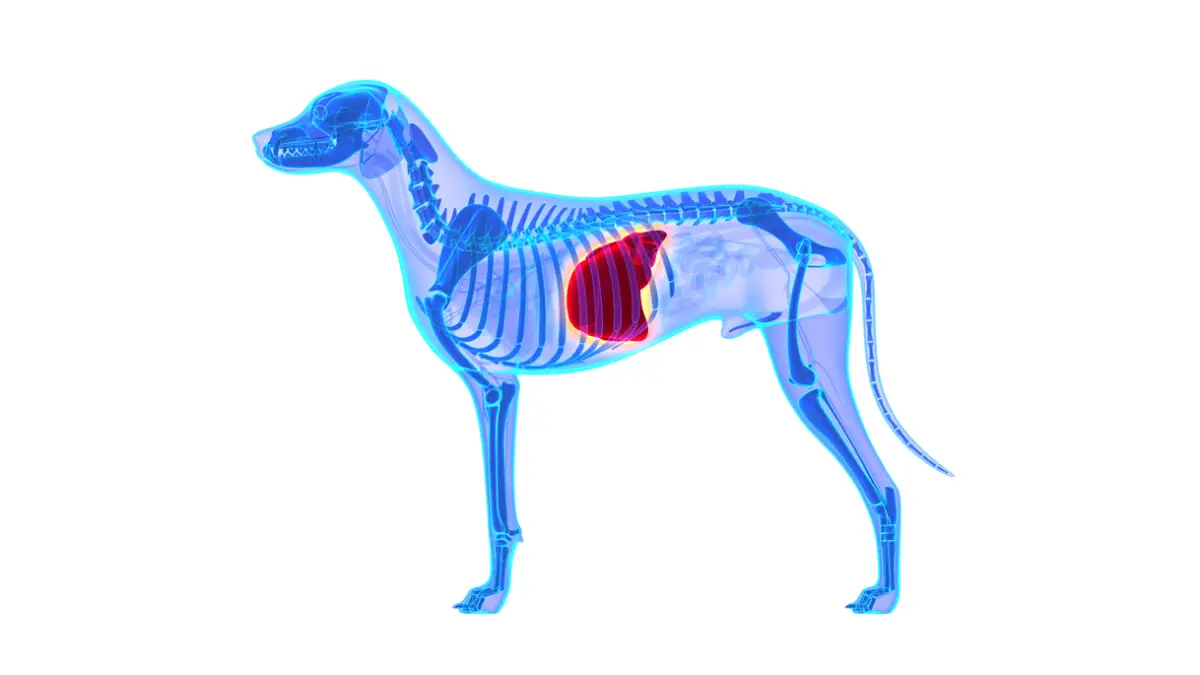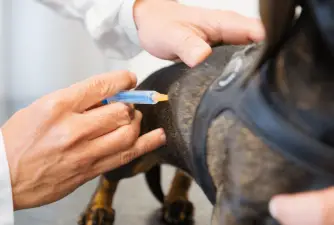Liver Disease in Dogs | Causes & Treatment
27.11.2021.
The liver is often an underrated organ, but humans and dogs cannot live without it. This is as a crucial organ as they come, and if your dog has issues with this organ, you might be right to feel very worried. If you suspect your dog has liver problems, you should call your vet and schedule a checkup. Here’s what you should know about liver disease in dogs.
Why is the liver important?
As we already briefly mentioned, the liver is very important. However, not many owners actually know just how important the liver is. It performs several crucial body functions, and you need to be sure your dog has a healthy liver (and make sure yours is healthy too). Here are some of the most essential functions liver is responsible for;
- Detoxifies the blood
- Metabolizes sources of energy
- Break down drugs
- Produces proteins for blood clotting
- Produces bile acids for digestion
- Stores vitamins and glycogen

What is liver disease in dogs?
The biggest issue with liver disease in dogs is that it can manifest in different ways. The liver performs different vital functions. If there is an issue with any of these functions, they can cause various symptoms. Different issues can affect dogs, and they can be pretty dangerous and life-threatening. If you notice your dog has liver disease, take them to the vet immediately. Here are some of the potential liver diseases that can cause problems for your dog;
Endocrine Diseases
Different types of endocrine diseases can lead to liver issues. Illnesses like Cushing’s disease, diabetes, or hyperthyroidism can affect liver functions. They can cause all sorts of problems, and if your dog has one of them, you should keep an eye on their liver health.
Congenital Portosystemic Shunt
Congenital portosystemic shunt is a birth defect that includes a blood vessel that will bypass the liver. That will lead to the buildup of toxins the liver would otherwise filter.
Leptospirosis
Leptospirosis is a dangerous disease that can lead to kidney and liver issues. Dogs can get it from drinking contaminated water, and this disease can infect humans.
Infectious diseases
Leptospirosis is not the only infectious disease that can affect the dog’s liver. Since the whole blood passes through the dog’s liver, it is highly susceptible to infections. One of those diseases is canine hepatitis. Fortunately, this disease can be prevented with a shot.

Fungal infections
The liver is also susceptible to fungal infections. The two most common fungal liver infections are coccidioidomycosis and histoplasmosis. These are severe infections because they will require months of treatment. Even with the most successful drugs, the prognosis is very difficult to make.
Tumors
Dogs can develop liver tumors. They come in two forms - primary and secondary. Primary tumors originate in the liver, and secondary tumors are metastasis.
Cysts
Cysts are growths on the liver, and if they are not taken care of, they can cause liver disease symptoms. Dogs can be born with them, or they can develop over time.
How can I know if my dog has liver disease?
Most dog owners will not know their dogs have liver issues, especially when they get first symptoms. Most of us will simply notice something is wrong with our dogs, and we will take them for a vet checkup. The vet should make a reasonably accurate diagnosis, which is when most of us learn our dogs have liver disease. However, there are some symptoms dogs with liver disease can exhibit.

Symptoms of liver disease in dogs
As we mentioned earlier, the liver plays many different roles in the dog’s body. That means liver diseases can appear differently and cause all sorts of symptoms or clinical signs. The good news is that most experienced vets will very quickly become suspicious of liver disease when you describe your dog’s symptoms. When you notice something’s wrong with your dog, you should write down all the symptoms they are exhibiting. It will make your vet’s diagnosis a lot easier. Here are some of the most common liver disease symptoms in dogs;
Jaundice
The symptom we have to mention specifically is jaundice. When the liver doesn’t work correctly, bilirubin will build up and cause the yellowish appearance of the patient’s skin, gums, and eyes. Jaundice is a pretty clear sign that something’s wrong with the liver. Most vets will check your dog immediately for this symptom. Other symptoms of liver disease include;
Neurologic signs
- Weight loss
- Loss of appetite
- Seizures
- Disorientation
- Head pressing
- Blindness
- Personality changes
Gastrointestinal signs
- Diarrhea
- Changes in stool color
- Increased drinking and urination
- Weight loss
- Vomiting

How is the liver disease diagnosed?
The exact tests will depend on your dog’s symptoms. Your vet will first examine the dog’s symptoms and see what they have to look for next. Most vets will not be able to pinpoint the exact liver disease based only on symptoms, so they will order other tests. The most common tests vets check to diagnose liver disease in dogs are ;
- Blood tests
- X-rays
- Urinalysis
- Ultrasound
What is the prognosis for dogs with liver disease?
The prognosis will depend on the exact type of liver disease the dog experiences. Some can be eliminated entirely, and some can be fatal. The good news is that illnesses like hepatitis can be prevented by vaccinating the dog. However, some diseases are very dangerous, and the prognosis for them will not be that good.
World Dog Finder team







Share